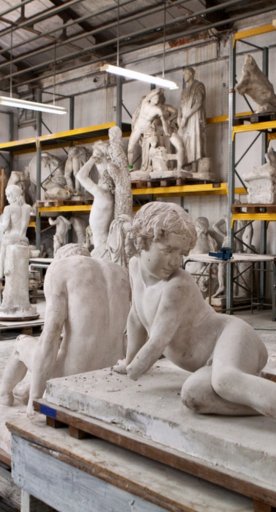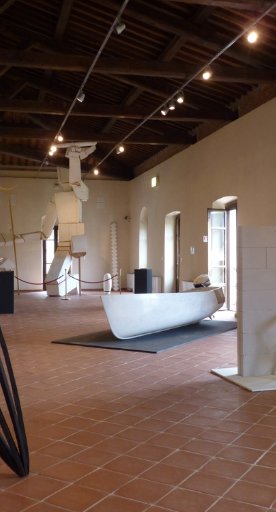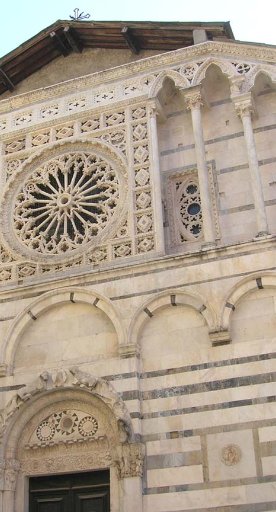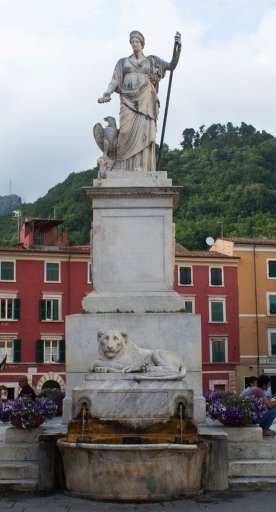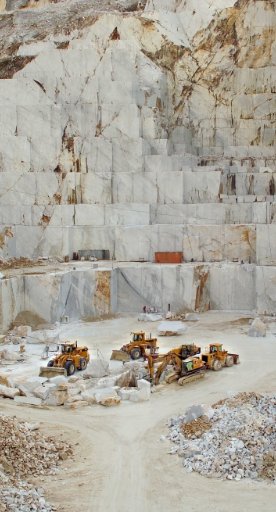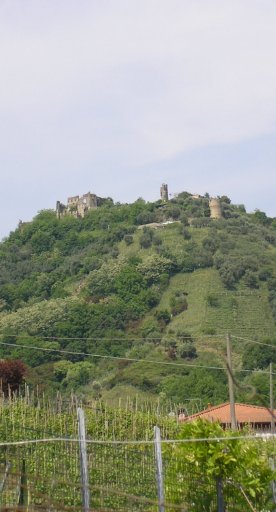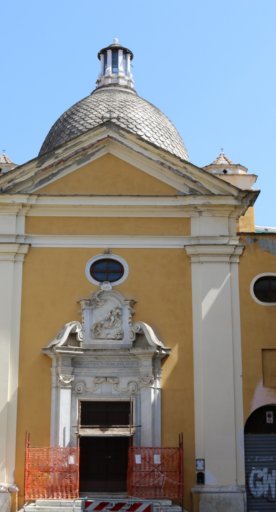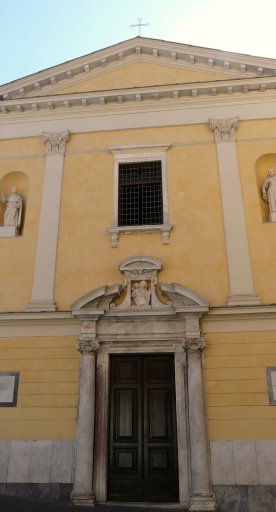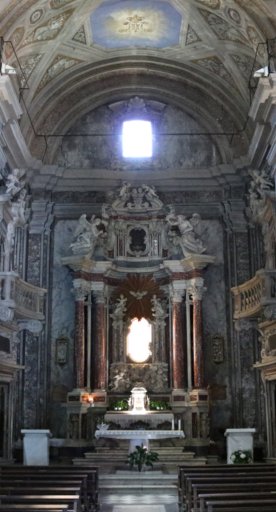
Piazza Duomo in Carrara
In the heart of the marble city, where Michelangelo stayed for awhile
Piazza Duomo is the heart of Carrara and takes its name from its dominating building, the majestic cathedral dedicated to Sant'Andrea, which is famed for its grandiose facade of white Lunense marble, striped with black marble from Colonnata. To the side of the Duomo stands the 33 metre-high bell-tower, documented as early as 1242, and the statue of Neptune, better known as the Statue of the Giant, made by the sculptor Baccio Bandinelli at the commission of the Doria family. Bandinelli left it incomplete, which was probably his reason for refusing payment; thus the statue languished in the warehouses of Carrara until Alberico I took advantage of it in 1563, installing it in a marble fountain alongside two dolphins.
Opposite the fountain stands a palazzo with a little niche in its facade, home to a cherubwith hands concealing its sex. According to legend, this figurine represents offended modesty, and tradition still holds that it was precisely this spot where adulterous wives were displayed naked to the public.
Palazzo Cybo-Malaspina also has a place in the piazza. From 1448 the permanent home of the Malaspina family, it melded a 13th-century church with a Renaissance palace and today is the seat of the Accademia delle Belle Arti. At the corner where Piazza Duomo meets Via Finelli there is an inscription to tell us that Michelangelo Buonarroti stayed many times in this very building, here to personally choose the most suitable Carrara marble for his sculptures.
